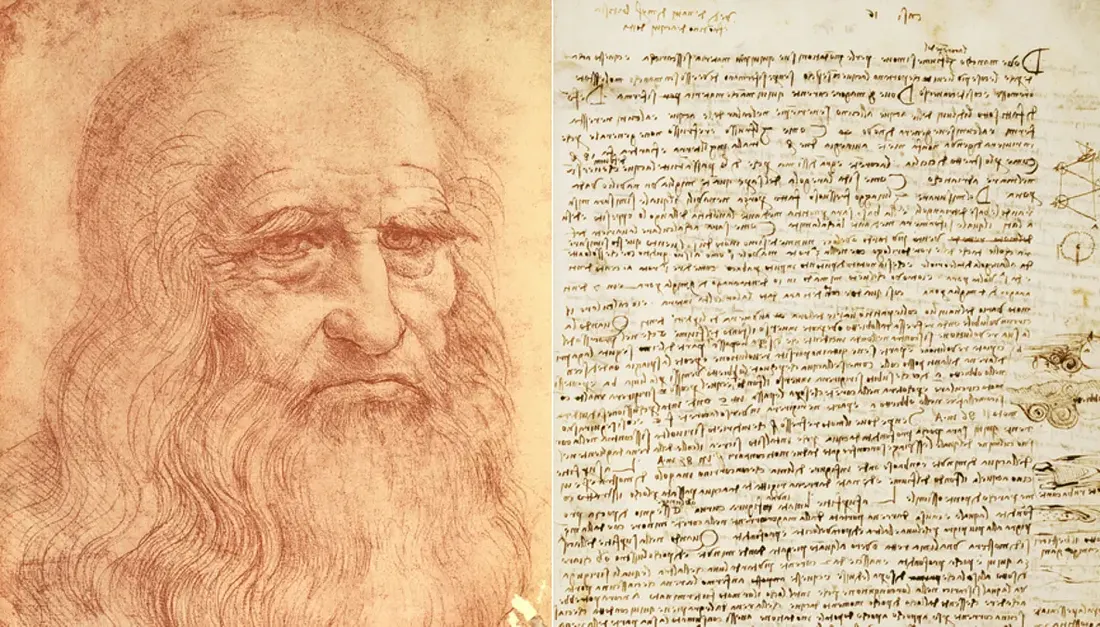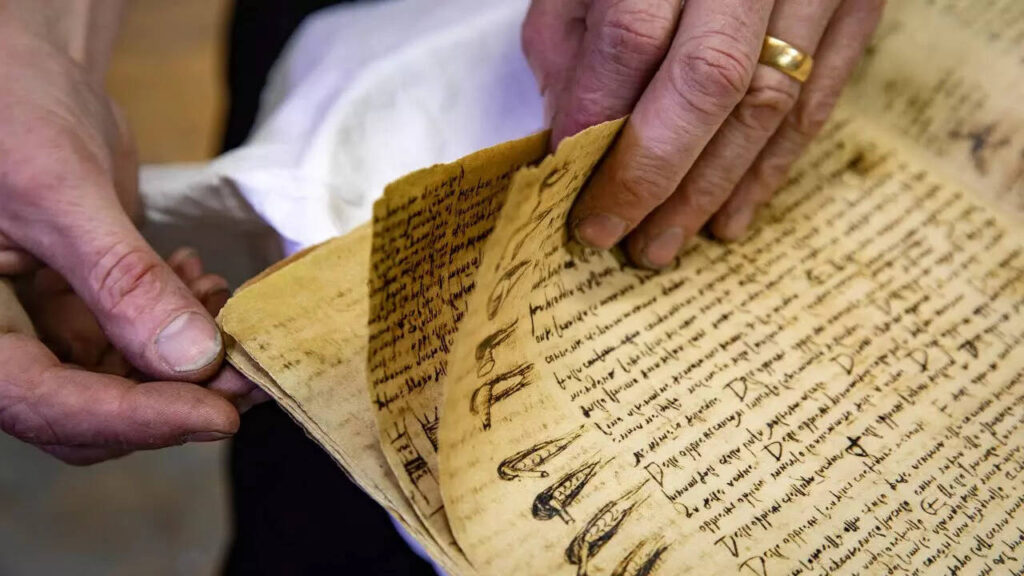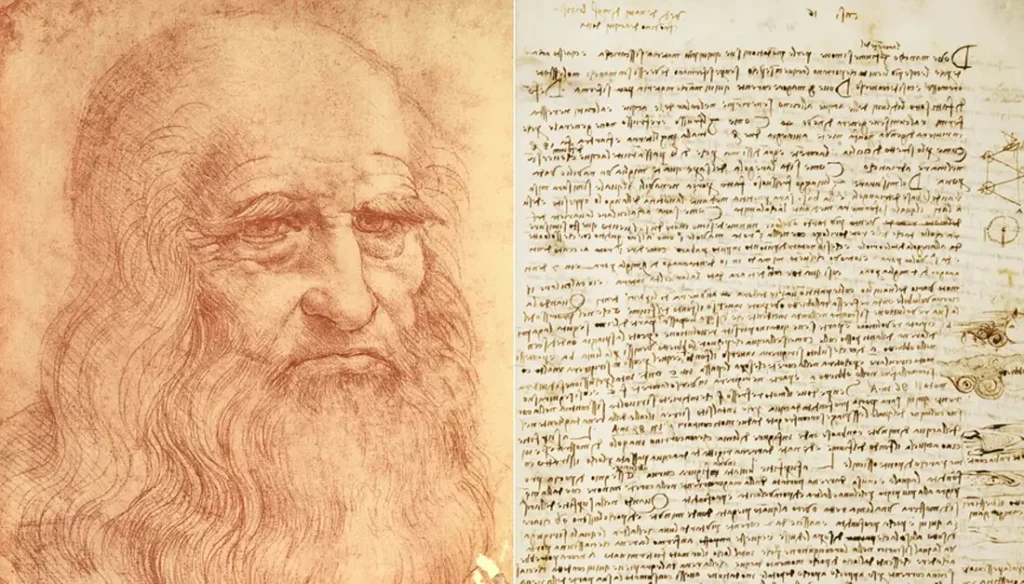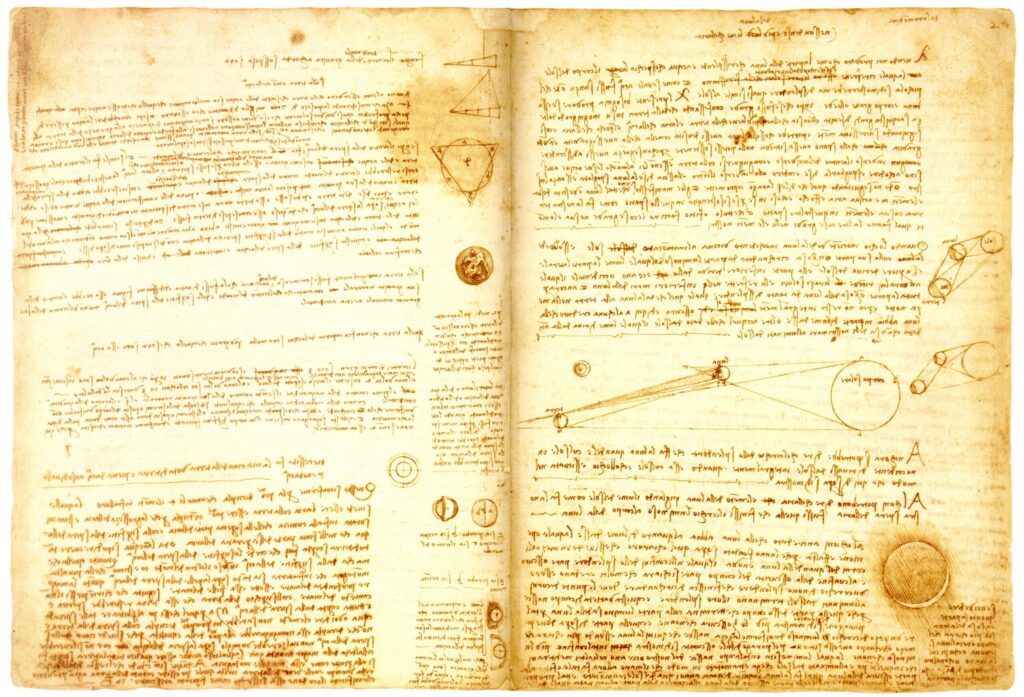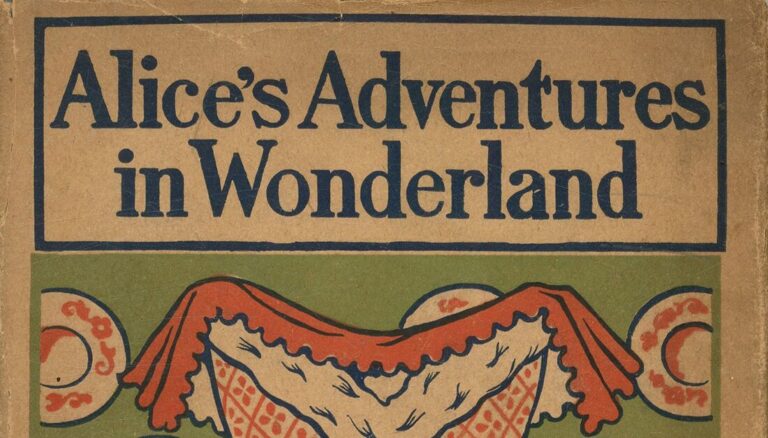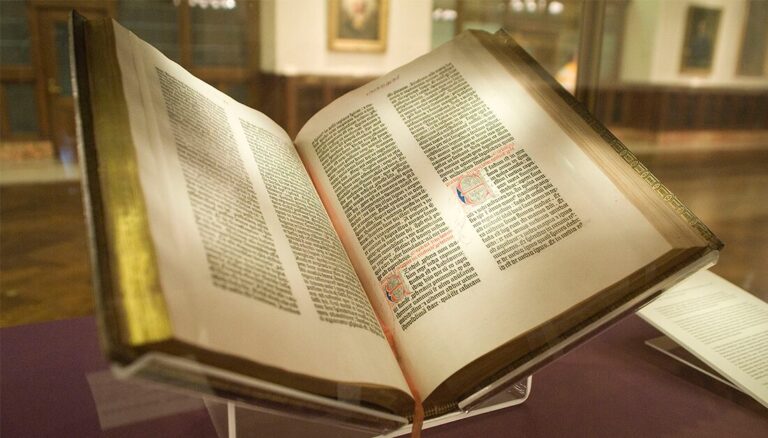The Codex Leicester: Leonardo da Vinci’s Window into the Mind of a Genius
Few books in history can rival the intrigue, rarity, and intellectual weight of The Codex Leicester. Written by Leonardo da Vinci between 1506 and 1510, this bound collection of scientific writings offers a direct glimpse into the mind of one of history’s most extraordinary thinkers. Far from being a polished manuscript, the Codex is a working notebook—filled with sketches, observations, and theories written in Leonardo’s trademark mirror script.
Its pages explore a wide range of topics: the movement of water, the luminosity of the Moon, fossils, astronomy, and the mechanics of rivers. Leonardo’s curiosity knew no boundaries, and the Codex reflects his relentless quest to connect art, nature, and science into a unified understanding of the world.
Named after Thomas Coke, the Earl of Leicester, who owned it in the 18th century, the Codex has changed hands only a few times in its 500-year history. In 1994, it was purchased at auction by Bill Gates for $30.8 million—making it the most expensive book ever sold at the time. Today, it is occasionally displayed in museums worldwide, giving the public rare access to its intricate pages.
More than a collector’s treasure, The Codex Leicester remains a testament to the boundless creativity of Leonardo da Vinci—a reminder that true genius is as much about curiosity as it is about talent.
Owned by Bill Gates
Gates purchased the manuscript in 1994 at auction for US $30.8 million, making it one of the most valuable books ever sold CNBCnotebookaking.com. As of now, there’s no public record indicating that he has sold it or transferred ownership since then.
